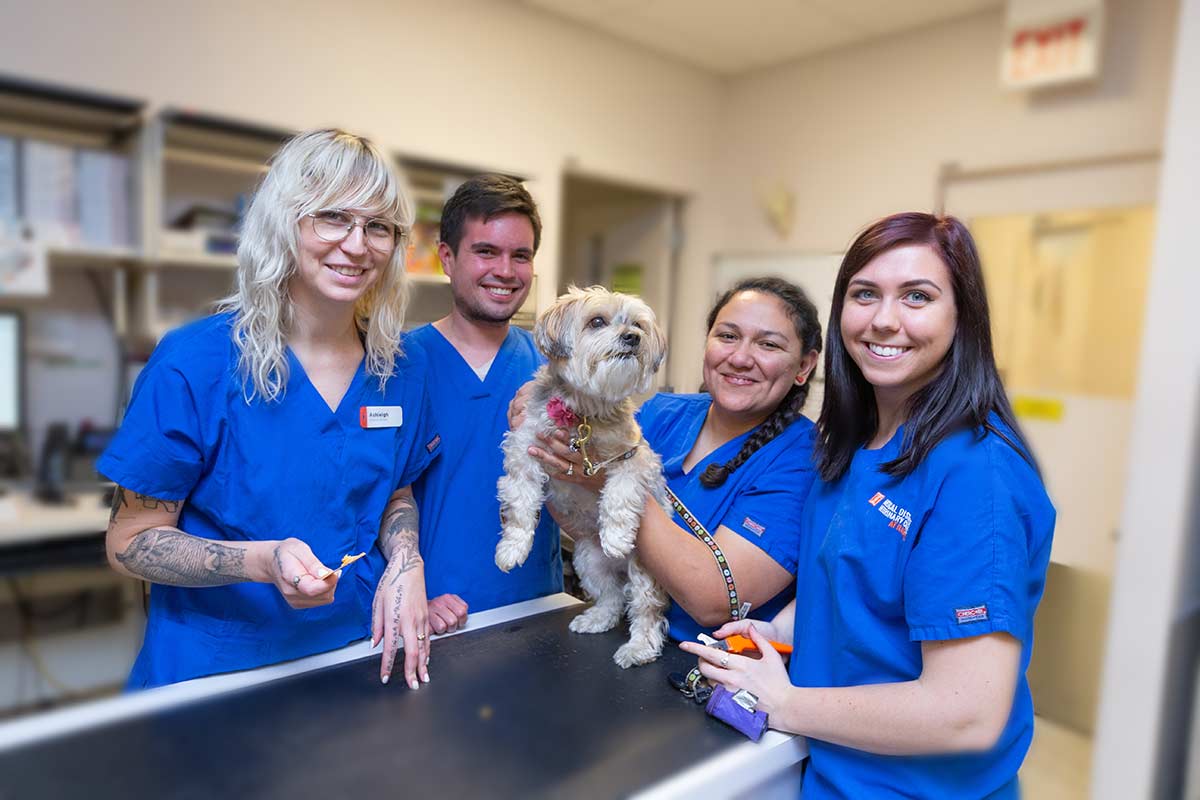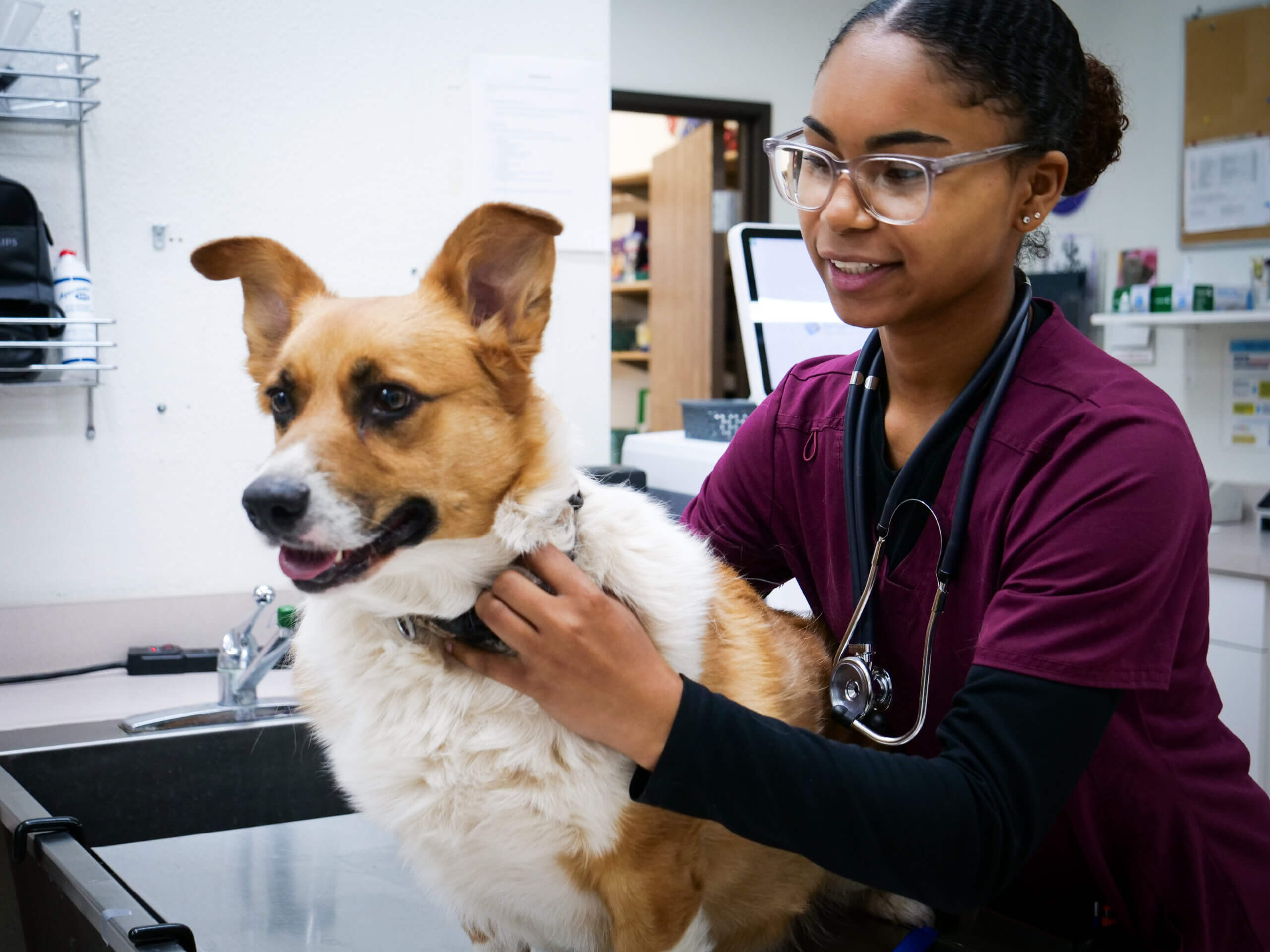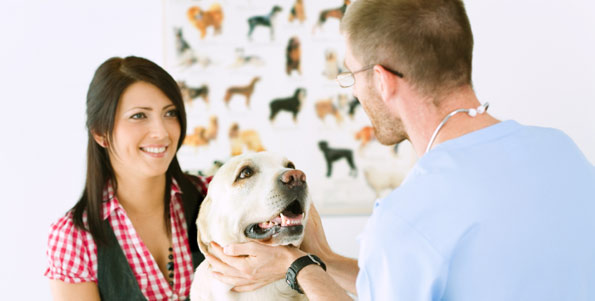A Veterinarian’s Insight Into Long-Term Outcomes of tplo surgery
A Veterinarian’s Insight Into Long-Term Outcomes of tplo surgery
Blog Article
Why Animal Rehab Is Critical: the Conveniences of Veterinarian Services for Your Family pet's Healing
Pet rehabilitation is a vital element of recuperation for animals dealing with injuries or impairments. Veterinary solutions provide essential support via tailored rehab plans that address private needs. These strategies usually consist of discomfort management, physical treatment, and nutritional assistance. Comprehending the numerous elements of animal rehab can illuminate its value in boosting healing outcomes. What certain benefits do these services offer, and just how can they transform an animal's healing journey?
Understanding Animal Recovery
Animal recovery encompasses a series of healing techniques intended at recovering the health and wellness and functionality of injured or disabled animals. This field integrates numerous techniques, including physical therapy, hydrotherapy, and occupational treatment, customized to fulfill the specific needs of each pet. Rehab specialists examine an animal's problem, creating customized treatment strategies that might entail exercises to strengthen muscular tissues, enhance mobility, and improve total well-being. The procedure not only concentrates on physical recovery however likewise addresses emotional and behavior facets. Pets often experience tension and anxiousness adhering to an injury, making mental health considerations important in rehab. By producing an encouraging environment, therapists can help pets restore their confidence and adjust to their brand-new circumstances. Through regular sessions, animals can experience significant enhancements, ultimately bring about a much better lifestyle. In general, recognizing pet rehabilitation highlights its importance in promoting healing and enhancing the bond in between family pets and their proprietors.
The Function of Pain Monitoring in Healing
Just how essential is effective discomfort management in the healing of hurt animals? It plays an essential role in promoting recovery and improving the total wellness of pets. Appropriate pain monitoring not only reduces discomfort yet likewise advertises flexibility, enabling animals to take part in recovery activities needed for recuperation. When pain is effectively managed, animals have a tendency to react favorably to treatment, causing quicker rehab outcomes.Veterinarians utilize numerous methods to assess and attend to discomfort, including drugs, acupuncture, and alternate treatments. By tailoring pain administration techniques to the individual demands of each animal, veterinarians can assure that animals continue to be calm and cooperative throughout their healing journey. Furthermore, reducing pain aids reduce stress and anxiety, which can prevent healing and prolong recuperation times. To summarize, reliable pain management is crucial for boosting the healing procedure and enhancing the lifestyle for hurt animals.
Physical Therapy Methods for Pet Dogs
Many physical treatment strategies are offered to aid in the recovery of animals recuperating from injuries or surgical procedures (emergency vet). These methods can boost movement, ease discomfort, and promote healing. Restorative exercises, for instance, help reinforce muscles and boost joint function, permitting animals to reclaim their physical capabilities progressively. Hands-on therapy, that includes massage therapy and mobilization, can minimize tension and enhance flow, adding to a much faster recovery.Other techniques such as passive variety of motion exercises urge joint flexibility and minimize tightness. In addition, electrical stimulation therapy may be used to promote nerves and muscle mass, promoting recovery and pain relief.Veterinary professionals often tailor these techniques to every animal's specific requirements, making certain a complete rehab plan. By implementing these physical treatment techniques, pets can experience enhanced lifestyle and a more successful recuperation from their ailments. The integration of these practices into rehab programs is vital for optimal recovery outcomes
Advantages of Hydrotherapy for Recovery
Hydrotherapy supplies considerable advantages in animal rehabilitation, especially in improving flexibility. This water-based treatment advertises discomfort alleviation while offering convenience to injured or recovering pets. Additionally, it facilitates strength-building exercises that contribute to overall physical recuperation.
Enhanced Mobility Enhancement
As animals recoup from injuries or surgical treatments, improved mobility often ends up being a primary goal of their recovery. Hydrotherapy acts as an important device in achieving this goal. Through water-based exercises, pets can involve in low-impact motions that facilitate joint wheelchair and reinforce muscle mass without the anxiety of weight-bearing tasks. The buoyancy of water supports their bodies, enabling enhanced series of activity and mobility renovation. In addition, hydrotherapy motivates much better equilibrium and control, which are vital for bring back regular motion patterns. Routine sessions can bring about significant progression in an animal's physical abilities, inevitably boosting their high quality of life. This approach not only aids in healing but also advertises a more active and satisfying way of living post-rehabilitation.
Discomfort Relief and Convenience

Alleviation from pain is an essential aspect of animal rehab, and hydrotherapy considerably adds to this procedure. By using water's buoyancy, hydrotherapy decreases joint tension and minimizes pain throughout motion. This healing technique provides a relaxing environment where animals can take part in mild workouts without the complete weight of their bodies impacting their healing. The warm water boosts blood flow, promoting recovery while likewise motivating leisure. Additionally, hydrotherapy sessions can be customized to fulfill the specific demands of the animal, ensuring excellent comfort. As pets experience minimized pain and increased comfort degrees, their total desire to join rehabilitation activities commonly improves, resulting in an extra reliable healing trip. Subsequently, hydrotherapy functions as an important device in improving pain alleviation and comfort during rehab.
Strength Structure Exercises
Strength-building exercises play a crucial duty in the rehab procedure, with hydrotherapy offering unique advantages. This type of treatment makes use of water resistance to boost muscle toughness without putting too much pressure on the joints. The buoyancy of water supports the pet's weight, allowing for safer movement and raised series of activity. In addition, hydrotherapy can enhance cardio wellness and advertise general health and fitness, aiding in quicker recuperation from injuries or surgical procedures. The regulated environment likewise lessens the danger of reinjury, making it a suitable option for pet dogs needing rehab. Normal hydrotherapy sessions can result in recognizable renovations in flexibility, stamina, and endurance, eventually enhancing the pet dog's lifestyle and capability to return to regular tasks.
Importance of Personalized Rehabilitation Strategies
Personalized rehabilitation plans are essential for dealing with the unique demands of each animal, making certain individualized therapy methods. These plans allow for efficient progression tracking and required changes, cultivating suitable recovery end results. In addition, an all natural approach can boost the general well-being of the animal, promoting a much more thorough rehabilitation experience.
Individualized Therapy Approaches
While many rehab programs embrace a one-size-fits-all technique, the unique needs of each animal demand personalized therapy prepare for optimal recuperation. Customized rehab plans take into consideration various elements, consisting of the pet's types, age, case history, and specific injuries or conditions. By customizing interventions, vets can deal with each pet dog's distinct challenges, maximizing the effectiveness of the recovery process. Individualized strategies may integrate various modalities such as physical treatment, hydrotherapy, and restorative exercises, making certain that the therapy lines up with the pet's abilities and progress. Additionally, personalized approaches cultivate a more powerful bond between the pet click here and the caregiver, promoting an extra interesting and supportive recuperation atmosphere. Ultimately, personalized treatment is necessary for accomplishing ideal feasible results in pet rehabilitation.
Progression Tracking and Adjustments

Holistic Recovery Strategies
All natural recuperation strategies are necessary for reliable pet rehabilitation, as they emphasize the relevance of individualized therapy plans tailored to every pet's certain needs. This strategy considers the physical, emotional, and ecological factors affecting healing. Customized rehabilitation plans might consist of a mix of physical treatment, dietary therapy, and behavioral alterations. By dealing with these varied facets, veterinarians can improve the general health of the animal and promote a faster recuperation. Furthermore, such customized techniques assist in a much deeper understanding of the pet dog's special challenges, bring about extra efficient treatments. Inevitably, holistic healing approaches not only enhance physical wellness however also add to the animal's mental and psychological security, ensuring a complete rehab experience.
The Effect of Nutrition on Healing
Nourishment plays a crucial role in the recovery process for rehabilitating pets, commonly establishing the rate and performance of recovery. A healthy diet gives the essential nutrients that support tissue repair, enhance the immune system, and boost overall vitality. Healthy protein is specifically essential, as it assists in muscle restoring and healing from injuries. Important fatty acids, vitamins, and minerals likewise contribute to decreasing swelling and advertising optimum mobile function.Veterinarians often emphasize the value of tailored nourishment plans, thinking about each animal's specific needs, age, and wellness condition. Appropriate hydration is similarly essential, as fluids facilitate nutrient absorption and assistance in detoxing. By making sure that animals obtain appropriate nourishment, caretakers can considerably enhance their opportunities of a successful healing, resulting in much better long-term health end results. Inevitably, nourishment works as a foundational aspect in the rehabilitation journey, supporting pets in reclaiming stamina and durability post-injury or illness.
Success Stories: Animals Who Prospered After Rehabilitation
Successful rehab tales abound, showcasing the resilience of family pets who have gotten over significant obstacles. Take, for circumstances, Bella, a gold retriever who suffered extreme injuries from an auto crash. With committed veterinary care and a complete rehab program, she regained her wheelchair and went back to her playful self, much to her owner's pleasure. Max, a senior pet cat identified with joint inflammation, experienced exceptional renovation via a mix of physical therapy and discomfort administration. His newfound agility allowed him to enjoy his favorite sunbathing spots again. Another motivating instance is that of Coco, a saved greyhound that overcame anxiety through behavior adjustment and socialization strategies, allowing her to thrive in her new home. These success stories exemplify the transformative power of animal rehab, emphasizing that with the ideal support, family pets can not only recoup however lead satisfying lives, improving the bonds they show their families.
Regularly Asked Questions
The length of time Does the Rehab Refine Commonly Consider Animals?
The rehabilitation process for pet dogs usually varies based on the injury or condition, ranging from a few weeks to numerous months. Individual development, treatment kind, and commitment to exercises substantially influence the total period of healing.
Are There Any Type Of Dangers Related To Pet Recovery?
Pet rehabilitation may lug risks such as exacerbation of injuries, improper strategies resulting in pain, or inadequate surveillance throughout recovery. These elements can prevent progress and affect the overall performance of the rehabilitation process.

Can All Pets Gain From Rehab Services?
Not all family pets might require rehab, but lots of can profit significantly. Rehab services can boost flexibility, minimize discomfort, and improve total well-being, particularly for those recuperating from injuries, surgical procedures, or persistent conditions.
Exactly How Can I Prepare My Family Pet for Recovery Sessions?

What Indicators Suggest My Pet Demands Recovery?
Indicators suggesting a pet might need recovery include trouble walking, limping, lowered task degrees, unwillingness to leap, or signs of pain. Observing these habits can prompt owners to look for specialist evaluation and therapy for their pets.
Report this page